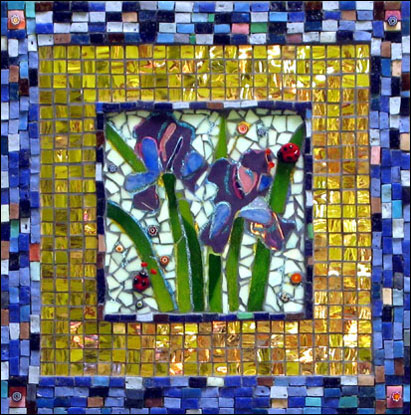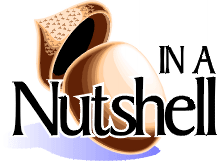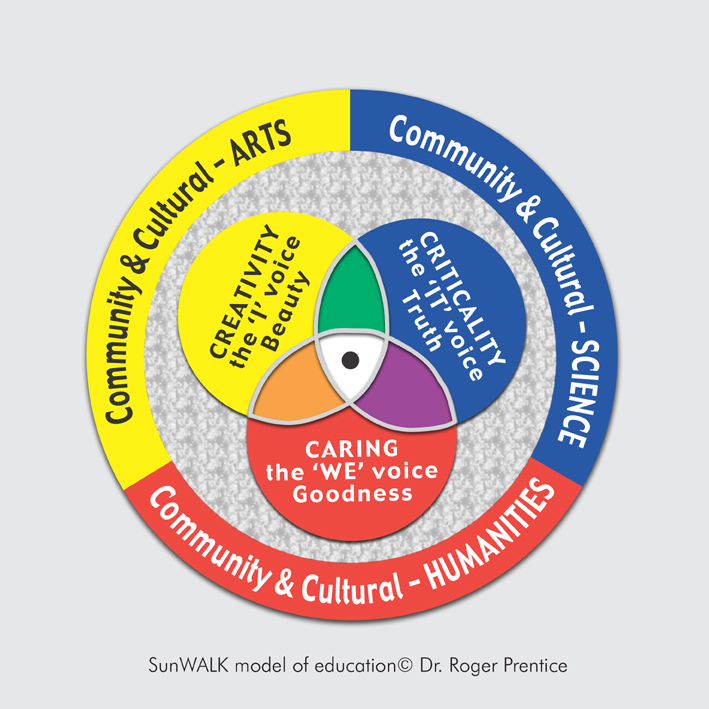Ver 2. as at 4th Aug 2007
PREFACE
This was written as a summary of some of the discussions held during a recent course run with 9 wonderful young women and men. So first and foremost this is for Poppy, Ellie, Jono, Saha, Natalie, Paddy, Jody, Kenny – and Davey.

This is what I feel/think I’ve learned so far;
WHAT’S WRONG?
Because of its lopsidedness and excessive specialization modern science, and thought generally, has got us into a mess. The mess is characterized by our consciousness and life being fragmented, mechanical and excessively materialistic. We need to create a new ‘post post-modernism’ that combines the positives from modernism, post-modernism and pre-modernism.
First of all we have to chose a starting point – because all of life is a circling matrix of connectedness.
THINKING AND FEELING AND BEING – AND BEING ‘MORE THEN’
I am – therefore I think. (Variation on Descartes’ starting point).
We are/You are – thereby I am. (Variation on a Swahili saying).
I am supported in my existence by all of the relationships in which I am embedded – including my ‘significant others’, and those I chose to lead me, and those with whom I chose to identify – so as to become like them or at least possess some of their qualities.
Our being is much more than our thinking, reason and logic – we are 51%, or more, feelings.
Unless our capacities for feeling are attenuated, blunted or simply under-developed.
We are known and knowable – but also exist at levels that are beyond the knowable.
That is we are, in the depths of our being, a mystery to our selves – and to each other.
Thinking is one way to engage with other/s, or the self – and with reality.
Thinking is what we do as part of being – sometimes it is more, and sometimes less, than the feeling/s we are also generating/experiencing. One or the other is in dominance at any one time.
Thinking and feeling are simply different forms of the single human spirit that flows through each of us – and apparently around that ‘space’ we call our inner world or interiority.
What would be a sensible name for the single flow of spirit that switches back and forth between ‘heart’ and ‘mind’? I suggest ‘heart-mind’. ‘Heart-mind’ actually has a long history in Chinese thought.
‘Heart-mind’ is preferable to ‘heart’ and ‘mind’ as some sort of separated ‘organs’.
Heart-mind is interiority – conscious thoughts and feelings, + re-callable memories + that which normally remains in the sub-conscious, such as painful memories.
HEART-MIND (THE ONENESS OF THINKING AND FEELING) AS THE 3 ‘I’, ‘WE’ AND ‘IT’ VOICES OR MODES OF ENGAGING WITH REALITY – AND OF CIOMMUNICATING WITH EACH OTHER
Thought and feeling however don’t account for the fact that we communicate with each other, at any one time, in one of three voices; ‘I’. ‘WE’ and ‘IT’ .
Sometimes our heart-mind/spirit switches into the I mode of artistic-subjective expression and engagement with reality.
Sometimes it switches into the WE mode of caring and other-focused action.
Sometimes it switches into the IT mode of scientific-objective investigation and engagement with reality.
We switch back and forth with great rapidity – unless we are in a meditative state or dreamless sleep. The other 2 voices are always ‘running in the background’.
THE ‘I’, ‘WE’ and ‘IT’ VOICES CORRESPOND TO CREATIVITY, CARING and CRITICALITY
I suggest that the term ‘thinking’ is better thought of as three separate ways in which we engage with reality, with each other – and our selves.
Thinking in the sense of Criticality (inc. philosophy, science maths, Eng. Lit, etc.) is one way for the human spirit to engage with reality. The other two are Caring and Creativity.
Caring focuses on moral truth as caring – action for the sake of others.
Creativity is concerned with subjective truth as a way to engage with reality – its voice says “This is how it has been for me, this is how it looks for me – standing in my ‘skin’.
Criticality focuses on objective truth – in which reasoning and logic are especially important.
Thought and feeling/s are two sides of a single coin – each transforms into the other moment by moment in the dynamics of the heart-mind. This is evident in simple introspection.
Heart-mind, is however socialized into the 3 I, WE and IT voices.
All 3 have cognitive and affective charges at any one time.
The I WE and IT voices are internalizations/socializations of parental voices, school and community voices.
The cultural ‘repositories’ that correspond to the I,WE and IT voices we call the Arts, Humanities & Sciences.
The moral voice is an internalization of early caring and experience – with conscience as the internalization of the parental voice.
There may be sensible connections to be made between left and right brain hemispheres and the UIT and I voices.
It seems sensible to connect the I voice and the mystical since both involve unitive experiences.
In dealing with the Critical IT way of engaging with reality we deal in concepts – but we might agree with Heschel who says “Concepts are delicious snacks with which we try to alleviate our amazement.”
CONCEPTS AS ‘DELICIOUS SNACKS’ – AND ‘AMAZEMENT’ AS THE UNITIVE STATE OF THE MYSTICAL EXPERIENCE
Amazement is the state of union, the unitive state which in its elevated forms is the mystical.
The mystical needs to be recognized as a normal, every-day even, part of being human. It needs de-mystifying and de-rarefying. It is not the sole prerogative of the exceptional such as Joan of Arc or of those who unhelpfully hear voices.
The basic experience is embedded in every day language as when we say, “It took me out of my-self.”
In normal, conceptual, busy-busy life we have a strong sense of ego/self/me-me. But sometimes I forget my self – through a unitive experience.
As the gospel song says;
I’m gonna lay down my heavy load
Down by the riverside
Down by the riverside
I’m gonna lay down my heavy load
Down by the riverside
Gonna study war no more.
One reading of the ‘heavy load’ is the small self, the ego, the ego boundary that keeps us in the relative hell of separation and pain and suffering.
Contemplation or perhaps deeper meditation is what takes us to the unitive state.
But I don’t think permanent self-loss is the goal because the dynamic lies in going back and forth between the unitive and the duality that is most of everyday life.
In fact I believe that our knowing comes as a consequence of the dynamic that arises from going back and forth between the unitive and duality
LOGIC IS WHAT WE NEED WHEN WE RETURN FROM THE STATE OF AMAZEMENT/MYSTICAL UNION
Logic is a good servant but insufficient as an overall master explanation of what we are, or what amounts to truth.
For example logic can be used impeccably to support the view that God exists, and equally for the view that there is no God.
Logical constructions, like journeys, always start somewhere.
That ‘somewhere’ in our intellectual-spiritual journeys, and dialogue with each other, is always a set of assumptions and viewpoints.
DEVELOPING A NEW PARADIGM – AND REALIZING THAT THE INADEQUACIES OF THE OLD PARADIGM LIE IN ITS SET OF ASSUMPTIONS (BECAUSE THEY LARGELY LIE UNTESTED)
The assumptions, like a geographical position, always imply a world-view.
The assumptions are largely untested like the 9/10ths of the ice-berg that is below the surface.
The world-view can include a range of other assumptions including what it is to be human, what constitutes reality, what is good or bad etc.
The new paradigm that is struggling to be born is characterised by wholeness, flow and realizations of the spiritual nature of being human – the opposites of fragmentation, the mechanistic and the excessively materialistic. Above all it centres on realizing to a much deeper and higher forms answers to the most important of all questions; “What is it to be (fully and positively) human?”
REALIZING UNITY – PERSONALLY OR COLLECTIVELY – IS HELP BY THE GIFT OF WISE VOICES
Individually our happiness depends on our integration – of heart and head, of identity and purpose, of personal development and service to others. One key secret is realizing that mind and body and spirit are all one and the same – the singleness of the life-force, chi, the human spirit.
Collectively we also need deeper realization of unity – that unity is based on the existential reality of being human. Like millions of others I learned this from Shakespeare. Scots would add Robbie Burns.
Unity can not in the social political sphere be achieved through philosophy or theology, both of which depend on reason and logic. Why? Well as the ancient saying goes, ‘The longest journey in the world is from the human head to the human heart, but the shortest journey in the world is from the human heart to the human head.’
Unity can only be achieved via a commitment to the existential reality of being human. We are all human. We strive for a better life. We have loved ones and we all suffer grief and loss……………….
Our theology and philosophy are only games (of reason and logic) that we play – on the ‘foundation’ of incomplete certainty, not-knowing and mystery – and they must take second place to realizing our existential human oneness – and truth and beauty and goodness.- and above all justice as our over-riding interior ‘conditioner’ as well as the chief conditioner in the social and political realms.
Deep unity is realized through our existential sameness. The ‘healthy doubt’ is vital in matters of theology and philosophy. Doubting, just a modicum not a flood, is healthy when it functions as a cousin of tentativeness and humility. Absolute certainty is the condition of the fundamentalist – and the fascist and terrorist. Unity requires something other than closed minds and cold hearts. The co-existence of humility – but without a collapse into the hell of relativity, political correctness and effete values now displayed in so many Western countries. But our unity lies in the state of not-knowing, not in hard and water-tight (heart-tight?) convictions;
“We are united by our doubts and divided by our convictions.” Sir Peter Ustinov
Excesses of certitude cut us off from truth and can lead to horrors of cruelty – the Nazis were certain that Jews, and Gypsies were sub-human.
“Certitude divides and diversity unifies…..We have to elevate religion above politics…..”
H.R.H. Prince El-Hassan Bin Talal of Jordan BBC Newsnight 9th Feb 2006
I am because we are. I am ultimately in a state of not knowing. I see through a glass not darkly, but with imperfect vision – this being an inevitable consequence of being finite.
Speaking personally I can’t live fully up to the truth, beauty, goodness, justice and mystery that I’ve learned (about) so far. This means that I, like us all, need forgiveness; hearts embrace, minds take a stroll together before parting. I/we need for-give-ness as part of the love through which to gain the will to walk on!
Go well.
Roger
Dr Roger Prentice

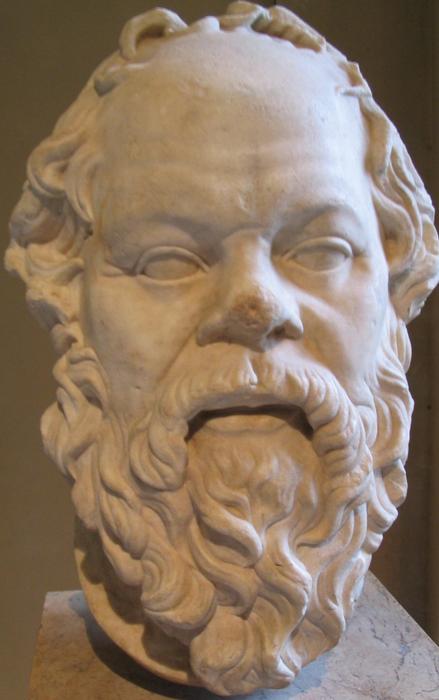 Socrates
Socrates
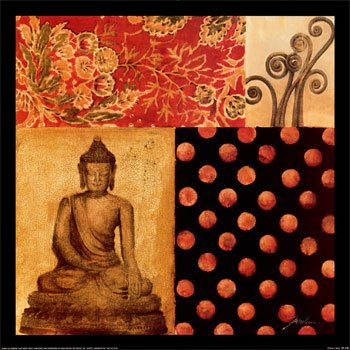

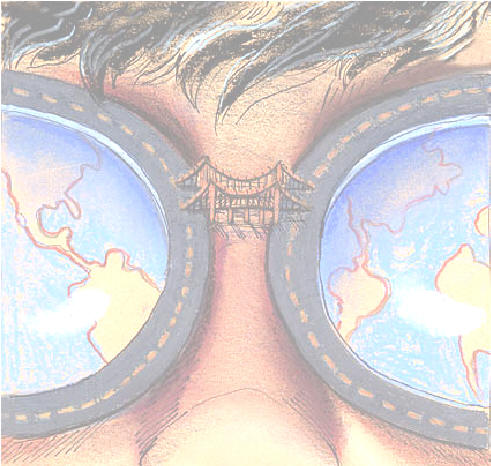 Source
Source